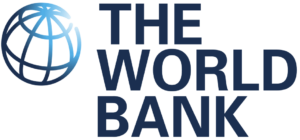Amidst the crashing Nigerian economy, a huge debt profile and and increasing unemployment rate, the country still has the highest remittance flow into Africa in 2022.

A popular proverb says that “a broken clock is right twice a day.”
Though the Nigerian economy is struggling at the moment, yet, it has managed to rake in a whooping $20.1 billion in remittance.
Nigeria’s Remittance Is The Highest In Africa
The World Bank made this disclosure on Wednesday in a report titled: ‘Remittances Remain Resilient But Are Slowing.’
Have you Read: Digital Trade Growing At 8% Per Year – Okonjo-Iweala
This figure represents 38% of the total remittance flow into Africa and is higher than Ghana (11.9%), Kenya (8.5%), Tanzania (25%), Uganda (17.3%) and Rwanda (21.2%).
“The increase in remittance flows to the region which supports the current accounts of several African countries dealing with food insecurity, and debt-servicing difficulties.
“It also supports supply chain disruptions, severe drought, floods (in Nigeria, Chad, Niger, Burkina Faso, Mali, and Cameroon),” the report said.
LMIC’s Depend Largely On Remittance
A broader look showed that remittance flows to low-and middle-income countries (LMICs) was $647 billion, but it was projected to rise slowly by 1.4% to $656 billion in 2023.
For the total remittance flows globally, the projection is $840 billion in 2023 and is projected to increase further by $18 billion in 2024.
“Remittances have continued to represent a larger source of external finance for LMICs, relative to foreign direct investment (FDI), official development assistance (ODA), and portfolio investment flows,” World Bank, said.
“The importance of remittances as a premier source of external finance for LMICs is more apparent when China is excluded from the sample.”
The report further stated that: “Remittances have become the most important foreign exchange earner in several countries.
“In Kenya for instance, remittances are larger than the country’s key exports, including tourism, tea, coffee, and horticulture.
Those countries are more dependent on receipts as a proportion to GDP include the Gambia, Lesotho, Comoros, and Cabo Verde.”
Africa Has The Highest Remittance Cost
In addition, the World Bank said Sub-Saharan Africa remains the region with the highest remittance costs.
Highlighting how costly remittance is on the continent, the report said: “Senders had to pay an average of 8.0% to send $200 to African countries during 2022 Q4, compared with 7.8% in 2021 Q4.
Costs vary substantially across the region, ranging from 2.1–4.0% in the lowest cost corridors to 17–35% in the highest.
“For example, sending $200 in remittances from Tanzania to neighboring Uganda would have cost a migrant 35.5% in 2022 Q4.
Banks charge the highest costs, thus emphasizing the importance of cross-border mobile money transactions.
In Kenya, Rwanda, Tanzania, and Uganda, such transactions are constrained by limited interoperability among telecom operators and money transfer operators.”
You May Also Like: UNGA78: See Five Things Tinubu Told World Leaders
Meanwhile, the growth of remittance flow into Africa is projected to fall to 1.3% in 2023, from 6.1% in 2022.
“Risks to the outlook include capital outflows, measures to control foreign exchange, and sanctions.
South Africa was put on a “gray list” by the Financial Action Task Force (FATF).
Growth in remittance flows is expected to recover to 3.7% in 2024,” the World Bank said.